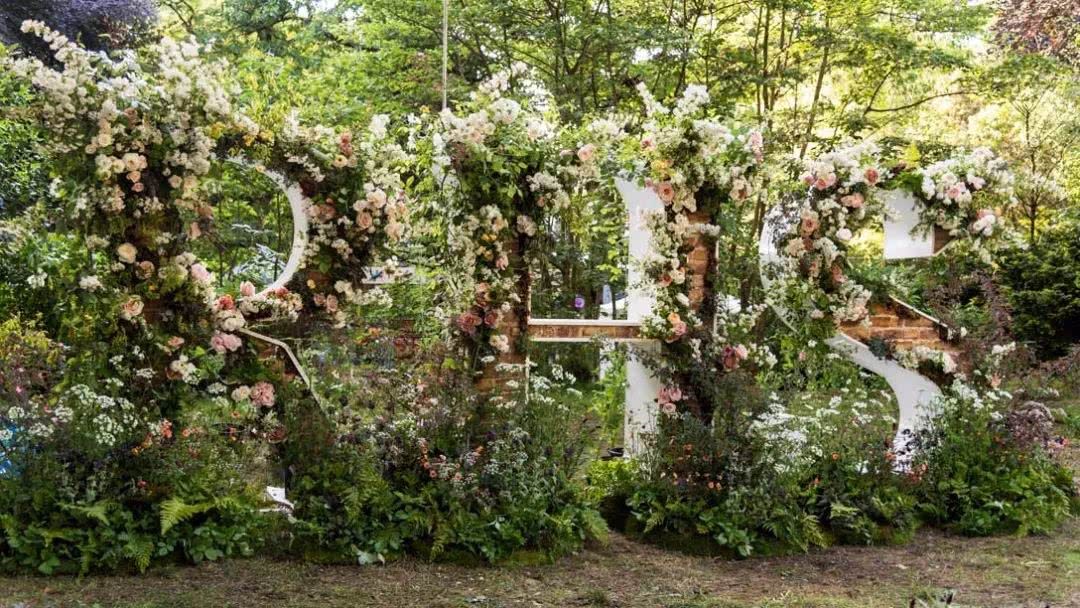The wind blows the autumn shadow and spits the fragrance of sweet-scented osmanthus in October

In the autumn season, sweet-scented osmanthus should be in full bloom, fragrant, full of golden flowers and jade buds, coinciding with mid-autumn, when autumn is in full bloom, when the night is in full circle, enjoy the wine, Chen fragrance to the nostrils, refreshing.
Sweet-scented osmanthus is one of the top ten traditional flowers in China, which integrates greening, beautification and fragrance into an excellent garden tree species with both ornamental and practical features. Among the ancient Chinese poems about flowers, the number of works about cinnamon is also considerable. It has been deeply loved by Chinese people since ancient times and is regarded as a traditional famous flower.
The cultivation history of Osmanthus fragrans in China is more than 2500 years. The ostentatious mountain and cinnamon mentioned in the Nanshan Classic in the Spring and Autumn and warring States period. Shan Hai Jing Xishan Jing mentions the mountain and cinnamon trees of Gao Tu. Qu Yuan's "Nine songs" has "help Beidou Xi drink cinnamon pulp, Xinyi car Xi knot cinnamon flag". "Lu's Spring and Autumn" highly praised: "the beauty of things, swaggering laurel." Yuejie Shu compiled by Yuan Kang and others in the Eastern Han Dynasty contains the words of Ji Ni to answer the King of Yue: "Gui Shi gives birth to cinnamon, Tongshi gives birth to Tong". Thus it can be seen that Gui has been loved since ancient times. To the Tang Dynasty, but also appeared in the myth and legend, Wu Gang cut Gui, Moon Rabbit in the side, rich aroma, preferred mid-autumn ~
Sweet-scented osmanthus adapts to subtropical climate and likes to be warm and humid. The average temperature in the planting area is 14-28 ℃, the average temperature in July is 24-28 ℃, the average temperature in January is above ℃, the minimum temperature is-13 ℃, and the optimum growth temperature is 15-28 ℃. Humidity is extremely important to the growth and development of sweet-scented osmanthus, requiring an average annual humidity of 75% Fry 85% and an annual precipitation of about 1000 mm, especially when young and adult trees blossom, which will affect flowering in case of drought. strong sunshine and shade are not good for its growth, and generally require 6-8 hours of light a day.
Sweet-scented osmanthus like warmth, strong resistance, not only high temperature, but also more cold-resistant. Therefore, the winter can be overwintered in open fields in the areas south of Qinling Mountains and Huaihe River in China. Osmanthus fragrans prefer sunshine and can tolerate shade. Under full light, its branches and leaves grow luxuriantly, bloom densely, grow sparsely in shade and flowers are sparse. If you plant potted plants indoors in the north, you should pay special attention to sufficient light to facilitate growth and flower bud formation. Sweet-scented osmanthus is good moist, avoid stagnant water, but also have a certain ability to withstand drought. Osmanthus fragrans is not strict on soil, except for alkaline soil and low-lying land or soil with too heavy viscosity and poor drainage, it can generally grow, but the slightly acidic sandy loam with deep soil layer, loose and fertile soil and good drainage is the most suitable. Sweet-scented osmanthus has a certain resistance to chlorine, sulfur dioxide, hydrogen fluoride and other harmful gases, and has a strong ability to absorb dust, so it is often used in cities and industrial and mining areas.
Sweet-scented osmanthus is suitable for planting in ventilated and transparent places and likes a clean and ventilated environment; it is not resistant to smoke and dust, and it is often unable to blossom after being harmed; it is afraid of flooding and stagnant water, and in case of waterlogging, the root system is black and rotten, and the leaf tip is scorched at first, and then the whole leaf is withered and yellow, which leads to the death of the whole plant; it is not very hardy, but compared to other evergreen broad-leaved trees, it is still a relatively hardy tree species.
Finally, it is said that in addition to smelling fragrance and watching color, sweet-scented osmanthus is also effective. Sweet-scented osmanthus yellowish white, fragrant, extract aromatic oil, make sweet-scented osmanthus extract; can be used in food, cosmetics, can make cakes, candies, and can make wine. Sweet-scented osmanthus is pungent and can be used as medicine. Used in medicine with flowers, fruits and roots. Pick flowers in autumn, pick fruit in spring, pick roots in four seasons and dry them in the sun. Flowers can cure cold and break knots, resolve phlegm and relieve cough. For toothache, expectoration and dyspnea, dysmenorrhea and abdominal pain. The fruit warms the stomach, calms the liver and dispels cold. For deficiency and cold stomachache. The root dispels rheumatism and dispels cold. For rheumatic muscle and bone pain, low back pain, kidney deficiency toothache.
-- END--
Everything is wonderful, there is a praise mall in the flower school.
There are flowers and love, a school of flowers
- Prev

I heard that the flower shows held in these places have come up with new tricks. It is amazing.
The annual Chelsea Flower Show at the Cheshire Garden Show is the Queen's trip, the victorious football team's triumphant return, the Chelsea Flower Show's opening of plants, a dramatic change in the garden designed to inspire people to follow.
- Next

Anhui intangible cultural heritage-Hui style bonsai
Hui style bonsai began in the Southern Song Dynasty, flourished in the Ming and Qing Dynasties, enjoyed a long reputation, as one of the traditional schools of Chinese bonsai, has a history of more than one thousand years. It was one of the main schools of bonsai in China at that time. Hui style bonsai originated early, has a long history, modeling skills...
Related
- Wuhan Hospital Iron Tree Blooming Result Was Instantly Frightened by the Gardener Master
- Which variety of camellia is the most fragrant and best? Which one do you like best?
- What is the small blue coat, the breeding methods and matters needing attention of the succulent plant
- Dormancy time and maintenance management of succulent plants during dormancy
- Minas succulent how to raise, Minas succulent plant pictures
- What are the varieties of winter succulent plants
- How to raise succulent plants in twelve rolls? let's take a look at some experience of breeding twelve rolls.
- Attention should be paid to water control for succulent plants during dormant period (winter and summer)
- Watering experience of twelve rolls of succulent plants
- Techniques for fertilizing succulent plants. An article will let you know how to fertilize succulent plants.

